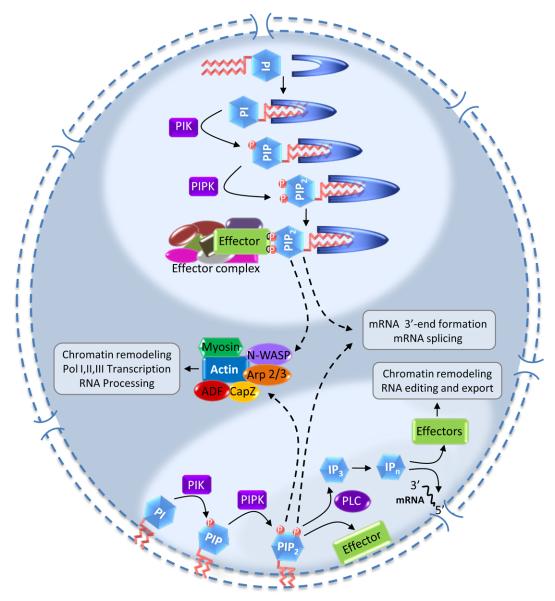Figure 4.
A model illustrating the compartmentalization of phosphoinositide signaling in the nucleus. Current data suggests two compartments for the nuclear phosphoinositide cycle: One associated with the nuclear envelope and another in a subnuclear compartment separate from known membrane structures. In both compartments, PI is sequentially phosphorylated by PI kinases (PIK) and PIP kinases (PIPK) to generate PIP2, which could then be metabolized by PLC to generate IP3 and then higher inositol phosphates (IPn) or phosphorylated by PI 3-kinase creating PIP3. In subnuclear compartments, phosphoinositides are hypothesized to be associated with carrier or effector proteins. Such proteins could be specific for certain functions and/or could present phosphoinositides to other effectors. In addition, regulation of nuclear actin polymerization and actin binding proteins, such as N-WASP, CapZ and ADF (actin/cofilin depolymerising factor), either from envelope-bound or endonuclear phosphoinositides (shown by dashed arrows) has been shown to affect many aspects of gene expression.

